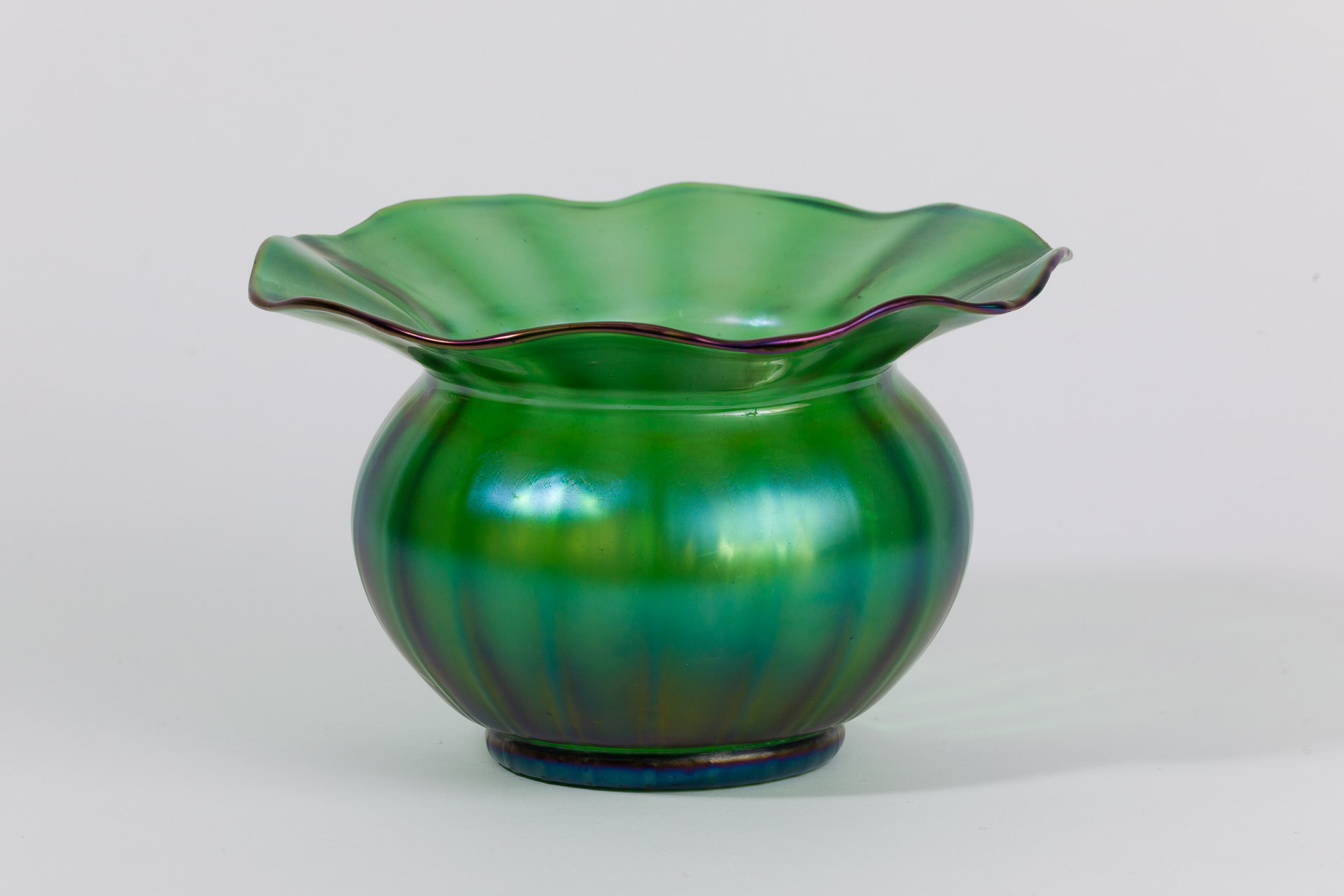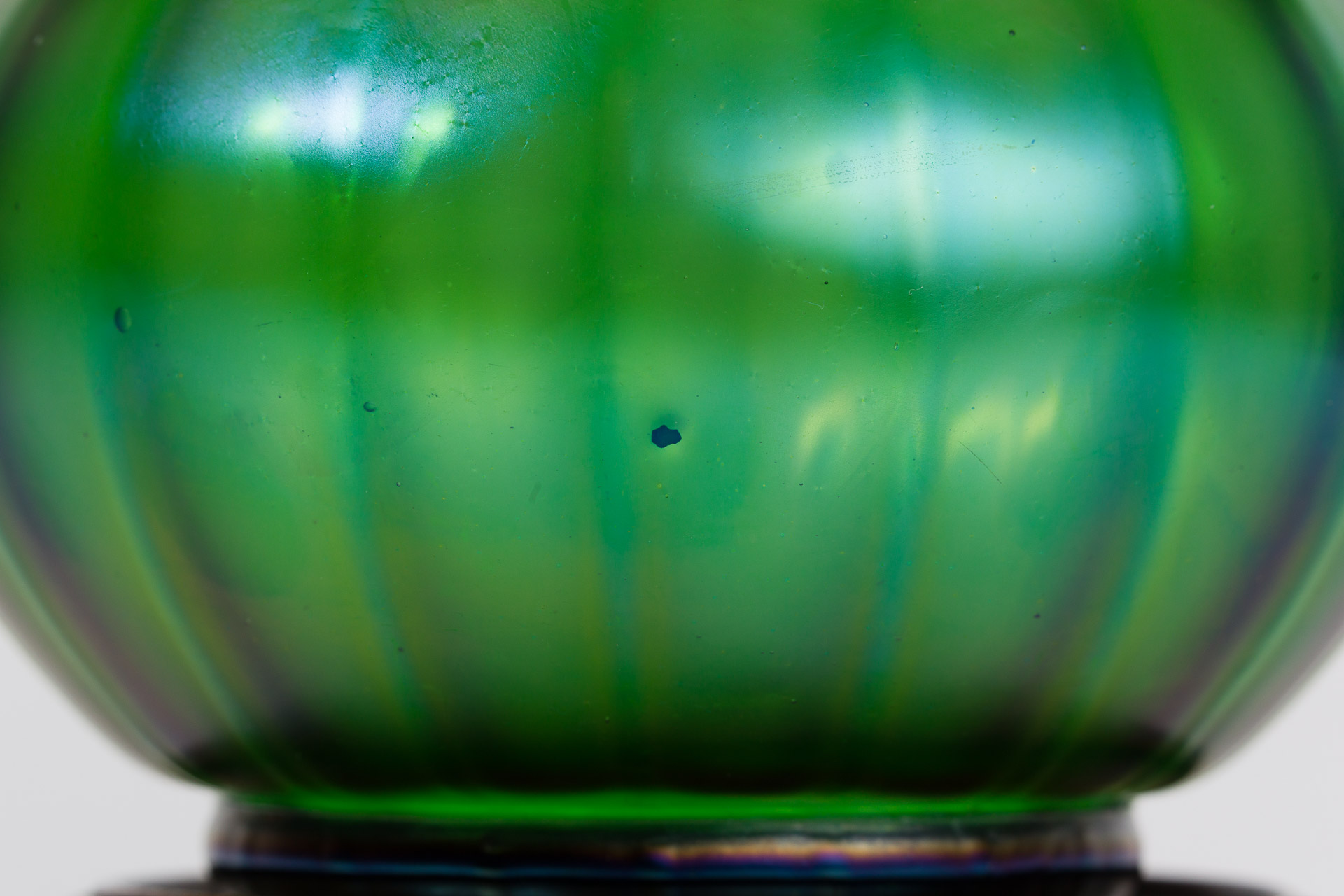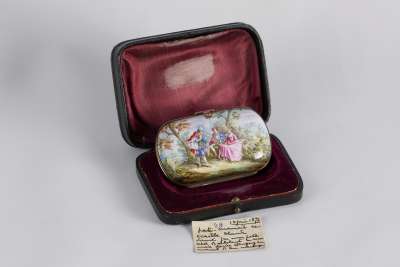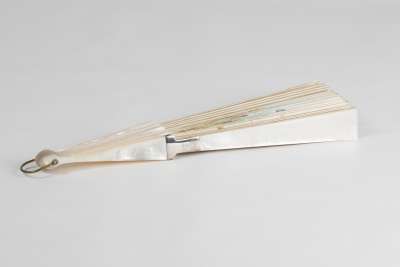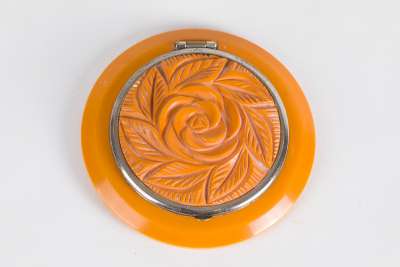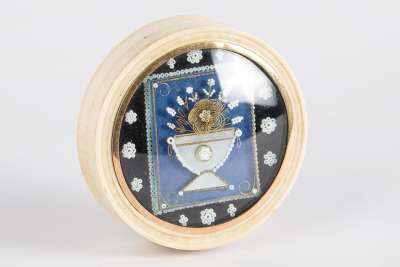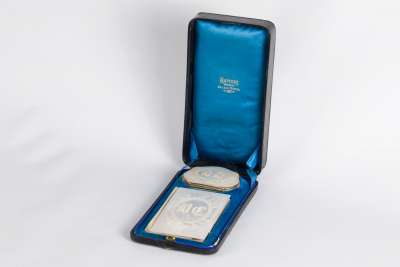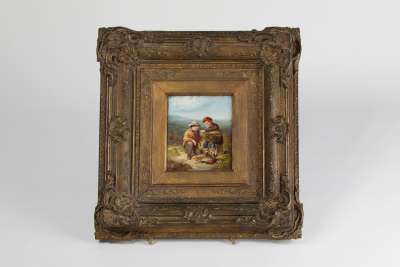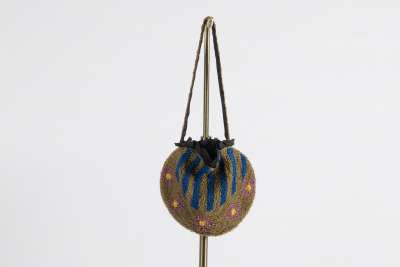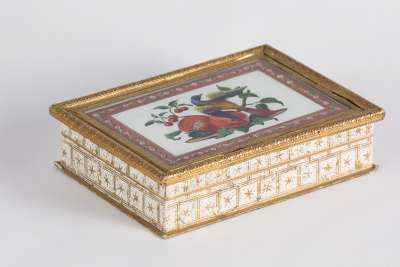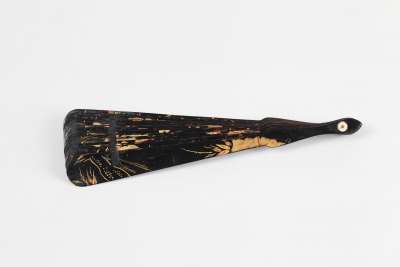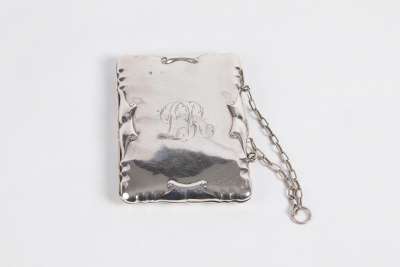The Loetz Glass Bowl is a captivating piece from the renowned Loetz glassworks, dating back to circa 1930-1940. This Austrian creation showcases a fluted ovoid form with an everted wide flat rim, subtly waved to enhance its visual appeal. The bowl is adorned with an iridescent green finish, characteristic of the Creta Glatt pattern range, which adds a unique luminescence to the piece. Its elegant design is a testament to the skilled craftsmanship of Loetz, a prominent figure in art glass production during the early 20th century in Austria.
Condition Report
The Loetz Glass Bowl is in very good condition, exhibiting minimal wear that is consistent with its age and use. The iridescent green finish remains vibrant, and the structural integrity of the bowl is intact, with no visible chips or cracks. The surface may show minor scratches or marks, typical of a piece that has been well-maintained over the decades. Such characteristics are common in vintage glassware and add to the authenticity and historical value of the item. Overall, the bowl is a fine example of Loetz's durable craftsmanship and careful preservation.
Dimensions
Weight: 570gm, Length: 19cm, Width: 19cm, Height: 12cm.
A Decorative Centrepiece
This glass bowl was originally intended as a decorative centrepiece, designed to catch the light and draw the eye with its iridescent finish. Its fluted form and wide rim make it suitable for displaying fruit or flowers, although it also stands alone as a striking ornamental object. Such pieces were often used in dining or living areas to add an element of sophistication and are highly valued by those looking to enrich their space with historical beauty.
Art Nouveau Influence
The Loetz Glass Bowl is a fine example of Art Nouveau design, a style that flourished from the late 19th century to the early 20th century. This movement was characterised by its emphasis on organic forms and the use of iridescent glass to create pieces that mimic natural phenomena. The subtle wave of the bowl’s rim and the flowing form reflect the Art Nouveau penchant for fluid, harmonious lines and the innovative techniques that Loetz employed to create their signature finishes. The iridescent finish, in particular, represents the movement's fascination with light and colour.
The Craft of Iridescent Glass
The Loetz glassworks were pioneers in the production of iridescent glass, a technique that requires skilled artisanship. This process involves the application of metallic oxides to the surface of the glass, which is then reheated to produce a shimmering effect reminiscent of peacock feathers or the sheen on soap bubbles. The Creta Glatt pattern is noted for its smooth surface and brilliant finish, achieved through meticulous craftsmanship. Each piece undergoes a thorough inspection to ensure quality, making every bowl a unique testament to the expertise of the Loetz artisans.
Loetz Glassworks Legacy
Founded in 1836, Loetz glassworks became synonymous with cutting-edge glass design and innovation. Under the leadership of Max Ritter von Spaun, the company thrived in the late 19th and early 20th centuries, renowned for its vibrant and experimental designs. Loetz was particularly celebrated for its iridescent glass, which set new standards in art glass production. The glassworks collaborated with leading designers and artists of the time, cementing its legacy as a pivotal contributor to the Art Nouveau movement, and pieces like this bowl continue to be treasured for their historical and aesthetic significance.
Coveted by Collectors
Collectors are drawn to Loetz glassware for its historical significance and the innovative techniques that the company pioneered. The iridescent finish, in particular, is a hallmark of Loetz's artistry, making their pieces highly sought after. Enthusiasts appreciate the combination of form and function, with many pieces serving both decorative and utilitarian purposes. The enduring appeal of Loetz glass is evident in its continued presence in prestigious collections worldwide, where it is admired for its craftsmanship and the role it played in the evolution of glass art.
